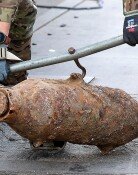Excessive Fouls Plague K-League Soccer
Excessive Fouls Plague K-League Soccer
Posted August. 30, 2007 07:59,
On Tuesday, 22,138 spectators visited Suwon World Cup Stadium to see their home team go for their fifth consecutive victory. Early in the game, Suwon scored a goal and the audience went wild. Three minutes into the second half, however, Chunnam Dragons defender Kang Min-su made a serious tackle on Lee Kwan-woo, the leader of the offense for Suwon Samsung. Lee was rushed to the hospital and Kang was red carded.
With the opponent one player short, the game was not as exciting as it had been. This is not the only match that was ruined by a foul. As of Tuesday, with 128 games played, the number of fouls committed by the 14 teams totaled 4,895, or 38.2 per game.
The sheer number is higher compared to European leagues, and these fouls delay games and make them less enjoyable, experts say. Fouls are inevitable to some degree in a game like soccer where players have to make a lot of body contact, but unnecessary fouls should be eliminated.
It is not easy to tackle the issue, however.
Director Jeong Hae-seong of Jeju United FC emphasized to his players during pre-season winter training not to make unnecessary fouls. Fouls in the penalty zone could easily result in loss of goals, and they also kill the fun of the game, he said.
The number of fouls for Jeju is the lowest in the league: 15.2 per game. Its performance is not so admirable, though: it ranks 11th out of 14 clubs. It is true that foul-makers are more aggressive and victory-seeking, said Jeong.
Others say that the solution to the foul issue of K-league lies in players skills and game strategy. Players make fouls because they are incapable of shaking off or blocking out opponents, said Park Hang-seo, head coach of Gyeongnam FC.
Coaches talk about aggressive play, but actually their strategy is focused on strengthening defense. Thats why there are so many fouls, said Han Jun-hee, soccer commentator for the Korea Broadcasting System.
kimsk@donga.com







